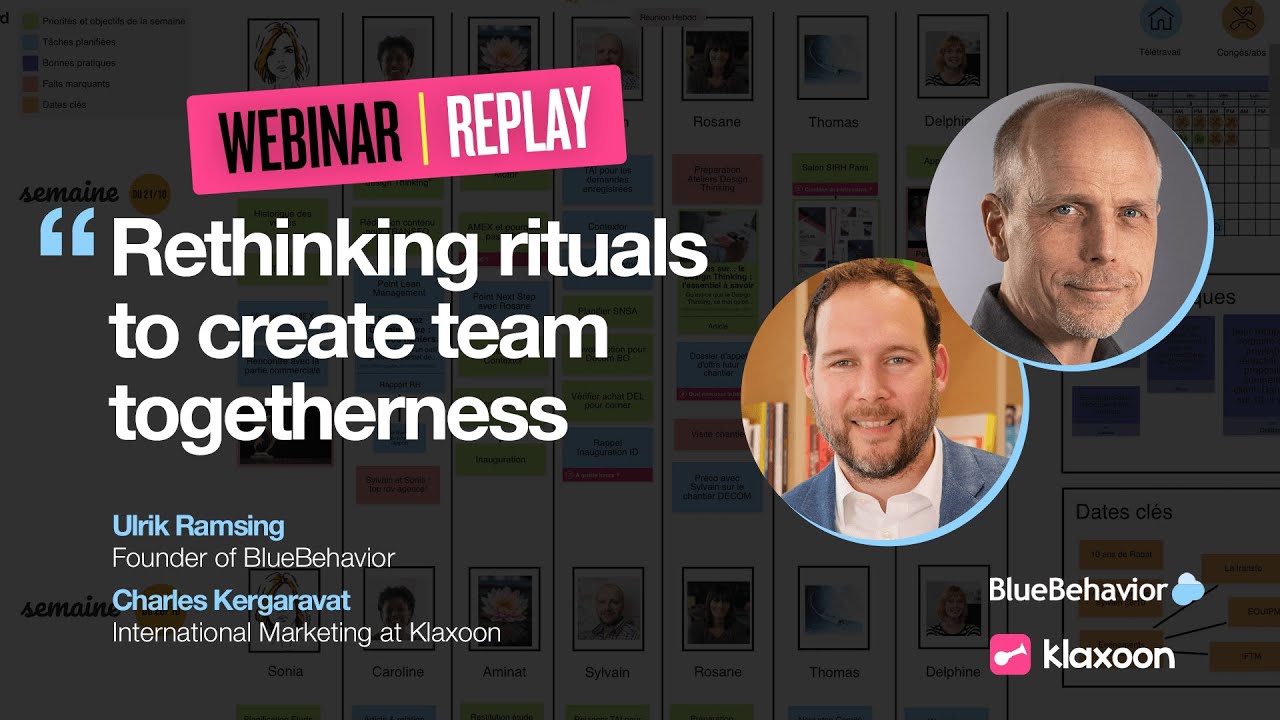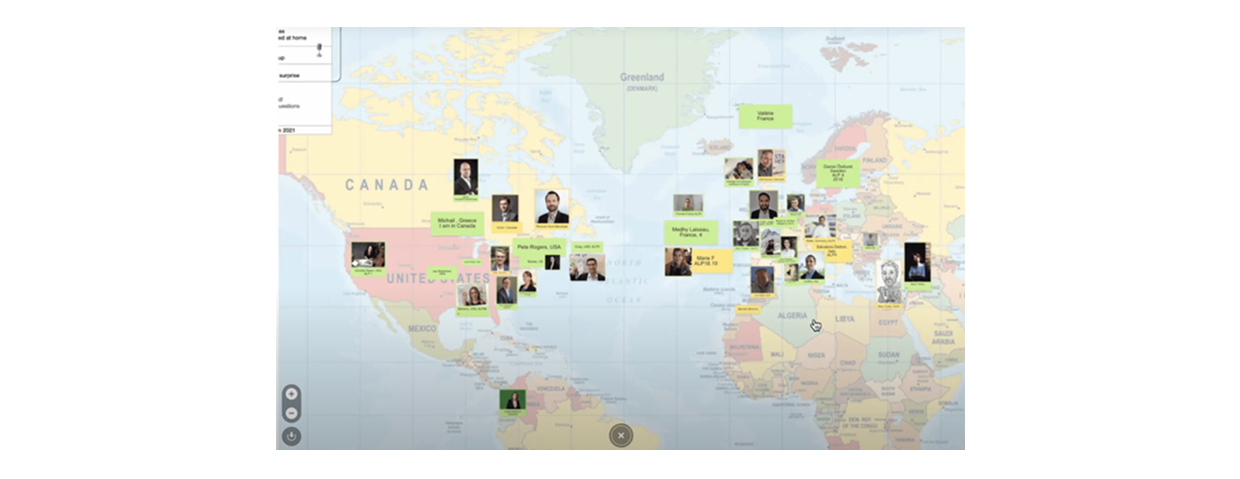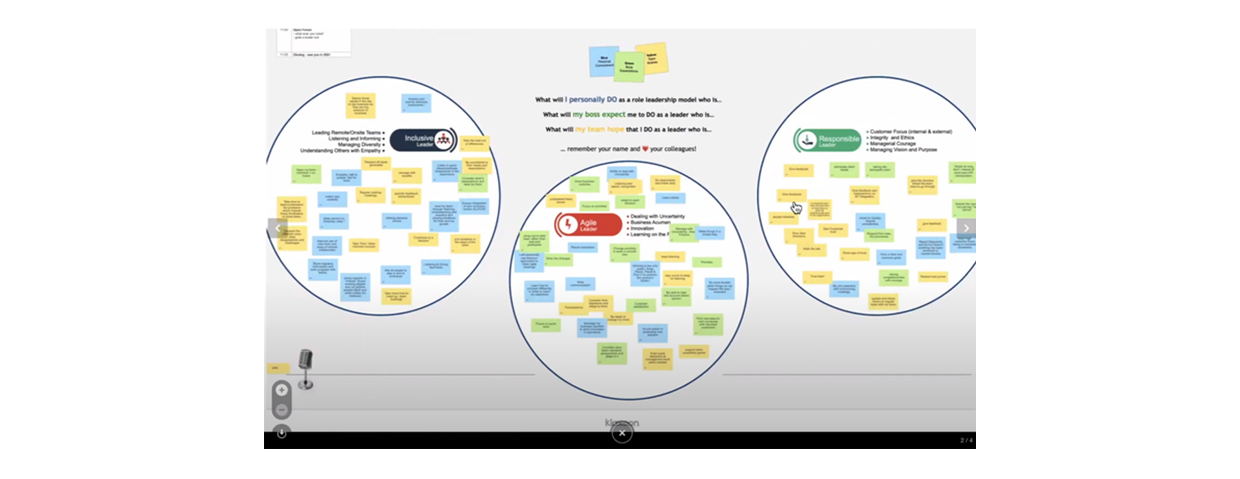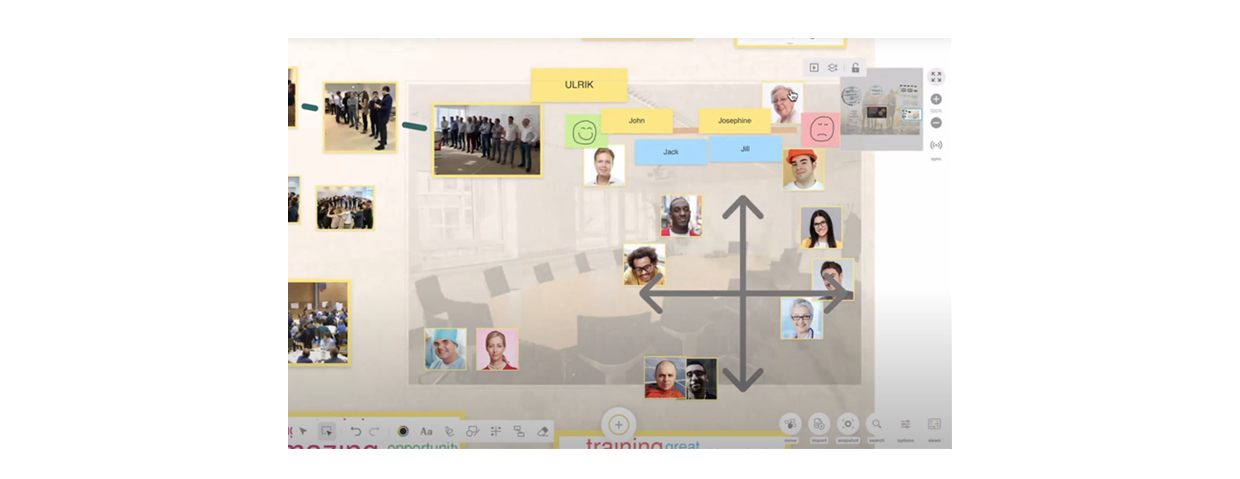Rethinking rituals to create team togetherness
Published on February 14, 2025
Rethinking rituals to create team togetherness

BlueBehavior, Founder
Ulrik Ramsing is the founder of BlueBehavior, a Danish leadership development company established in 2014. BlueBehavior designs, develops and deploys projects, talent programs and executive team coaching worldwide, helping leaders and leadership teams from small companies to large corporations to make better decisions, especially under adverse circumstances.

With the COVID-19 crisis and everyone having to work remotely and conduct online meetings, we have lost some of the important rituals which characterize in-person meetings and which enable us to focus on the people rather than the topic or the product. For many companies, conducting virtual meetings is nothing new, but their number and frequency have surged over the past year. It is therefore important to be able to implement previous best practices and, at the same time, to make the most of the opportunities that this new format provides.


The global pandemic has forced companies to rethink their working practices and learn to meet in a different way. In most cases, this has led people to concentrate on the most productive phases of a meeting, getting straight to the heart of the matter and forgetting about the rituals which characterize physical meetings, from saying hello to shaking hands, from exchanging business cards to sitting around the table. With remote work taking over and people jumping from one virtual meeting to another in which every minute counts, simple things like introducing yourself or closing a meeting have virtually disappeared.
But why are rituals so important? And why should we find a way of integrating them into our virtual meetings?
Ulrik explains that rituals are about people: they provide important information about participants and allow us to tune in to a meeting, creating team togetherness. The lack of rituals prevents this connection among people and is also causing the so-called “corona fatigue”: “People are very busy but they feel disconnected,” Ulrik says. “We need to get back to the rituals and create that togetherness amongst the participants because that’s where performance is long-term.”
So if you want your online meetings to be successful, it is essential that you become more aware of those moments that bind teams together in order to create an environment in which people can learn from each other and come up with new ideas. Thus, a 60-minute meeting should always include 10-15 minutes for the team to connect.
“When we lose those rituals, we lose an important part of the information that we need to make decisions together. So rituals are important because they connect people, and they do that regardless of the subject matter.”
When people walk into a traditional meeting and take a seat, they have the opportunity to interact. Unfortunately, this form of communication tends to get lost when we switch to online meetings. It is therefore important to create some kind of ritual to allow participants to settle in, get to know each other and engage. And the Klaxoon tools are there to help you to achieve this.
The Klaxoon Board is an easy-to-use online whiteboard allowing collaboration in a visual, infinite workspace, which can be accessed from any location and integrated with ready-to-use templates. Board Hybrid integrates Live, a built-in video conferencing tool designed for hybrid exchanges.
It is very important to make sure that all participants turn their cameras on: this will help them to feel more involved and interact with their colleagues, and will allow the facilitator to visually understand how they are feeling.
“The kind of gestures that you would have in a normal meeting like thumbs up or a high five, they need to be in there as well.”
During one of his coaching sessions with Alstom, Ulrik creates an opening ritual using the Klaxoon Board: people “take a seat” by placing their name tags on the empty chairs around the tables. They can also tell the other participants about their expectations by placing the cursor on the proposed scale.


Example of an opening ritual that Ulrik created with the Klaxoon Board for a remote coaching session with Alstom. On the left you can see a generic illustration of the room with empty seats, whereas on the right participants have filled the tables up by placing their name tags around them. Ulrik points out that, even in an online setting, it is very important to be able to “see people sitting down”.
The Klaxoon Template Library includes a wide range of templates, i.e. collaborative methods, tables or patterns inspired by industry standards, agile methods and best practices from the Klaxoon community. The Team Mood Forecast template, for instance, is the perfect icebreaker for meeting openings as it allows you to assess the team’s mood. The Klaxoon Board also offers to use Question, the quickest and easiest way to ask questions during a meeting, or asynchronously. For example, the Question tool enables the facilitator to assess the participants’ experience or expectations – something that would normally be done with a quick interview at the beginning of the meeting. Open-ended questions, challenges, ideas and polls are also available using Board.
Another idea is to add a map of the world to the board so that people can show where they are by placing a photo of them on their current location: this works particularly well for international online meetings in which participants are connected from all over the world.


As part of the opening ritual for an international online event, facilitators can ask participants to place a name tag or photo on a world map to show people where they are connected from. This will reinforce the sense of team togetherness.
This kind of opening ritual may take time but it enables people to clearly understand, right from the start, that they are allowed to speak up and ask questions, thereby encouraging dialogue throughout the entire meeting. This means that the first few minutes are crucial for the success of an online meeting, regardless of the fact that the participants know each other or are meeting for the very first time.
“Rituals take time but it will be the foundation for the kind of dialogues that afterwards avoids misunderstandings.”
In a virtual setting, preparation is key: the facilitator needs to be much better prepared than in a traditional meeting because the lack of verbal and non-verbal feedback makes improvisation difficult.
The Klaxoon Board provides Ulrik with a collaborative online whiteboard which can be prepared in advance so that participants can then fill it in and add ideas as they go along: it provides “good places for ideas to come in so that we can move into parallel processes instead of one waiting for another”, thereby facilitating engagement.
People can then click on the things they like: this makes participants feel appreciated because it is “like walking around and giving people a thumbs up or a tap on the shoulder”. And ultimately, it helps to build trust.
“[...] I hear people talking about this as digital post-it notes… Yes, but they are a lot more too. Because [they] can collect information and I can use that later on for quotation but I can also use it for the participants to virtually touch each other and appreciate each other [...]. And that’s key, again, because it’s part of building up trust.”
Keeping people engaged also means establishing some kind of order, and the Klaxoon suite of intuitive tools makes this very easy, regardless of the type and size of the meeting you are preparing: for example, Ulrik adds a microphone to the board so that people can signal that they want to speak.


The Klaxoon Board can be used as an online whiteboard on which people can add and move ideas around, visually collaborating and engaging. They can also easily ask to be able to speak by placing their name tag next to the integrated microphone (bottom left).
“I am very pleased with the toolbox inside Klaxoon. […] You can also use it in a more structured process that allows you to prepare for whatever the room needs: a quick quiz or a structured brainstorm or maybe a piece of survey.”
In an in-person meeting, the facilitator can ask participants to stand up and line up or join a particular group of people according to their opinion on a certain topic, and then engage in a conversation and exchange views with their neighbors. This gives people the opportunity to learn from each other but it is difficult to replicate in a virtual meeting if you simply use a video conferencing tool. However, with Klaxoon, it is possible to carry out teamwork in breakout rooms in which team members can easily “show” their opinion on a certain matter and move their name tag (or, even better, their portrait) around, thereby creating visual interaction.


Example of Klaxoon breakout rooms in which people, in small groups, can talk about a certain topic and visually “position themselves” on the board by using name tags or photos.
It is also possible for the facilitator to have groups of people working on the same topic in different areas of the board and take snapshots of each group in order to create a visual catalogue with different ways of solving problems. This is something that would be difficult to perform in a standard meeting.
“The need for us to connect is very visually oriented so, yes, moving things around helps, getting your name on there helps, but why not just ask people to take a little picture of themselves and move it back into here. Because, again, it will give me a better understanding of who it is I am talking to as I move into a breakout room.”
In order to increase audience engagement, it is crucial to have breaks, even in a virtual setting. It is up to the facilitator to establish when to have a break and how long it should last. The facilitator can freeze all activity on participants' devices by clicking on the play button in the top right-hand corner.
According to Ulrik, a break must include enough time for biological needs, to gather notes and socialize. A typical example is to ask participants to come up with a question at the end of the break: this ensures that they keep thinking about the meeting topic. Another idea could be to ask participants to socialize with another member, turning the camera on and showing them around the house: this ritual works better if people already know each other and is the virtual equivalent of hugging in a physical meeting because it allows team members to expose themselves and create meaningful connections.
The overall outcome of a meeting often depends on how the last few minutes are managed because that is what people will most probably remember: finding an effective closing ritual is therefore extremely important.
At the end of a physical meeting, the facilitator may ask participants to choose one single word that best describes what they have been doing during the meeting. In the same way, in an online setting the Klaxoon built-in word clouds allow people to enter a single word and, together, create a visual summary of the online meeting, which can then be saved and sent out as a memo. This kind of closing ritual helps people to feel connected.
“They feel connected because that visual tells them what they felt at the end, not what they were told to do.”
However, the best way of closing a virtual meeting is not to close it: nowadays, technology provides a number of opportunities for the experience to continue. So it is important to “keep the room open” so that ideas do not die in the meeting and keep flowing in, thereby providing new material for the next meeting.
“As you close, make sure that there is time to breathe, there is time to tell each other what was meaningful, what’s the good feedback, what we can learn from this.”
Be like Ulrik: create your own rituals using our easy-to-use engaging solutions to facilitate team togetherness in online meetings!
You too can adopt Klaxoon!
Unlock your teamwork potential